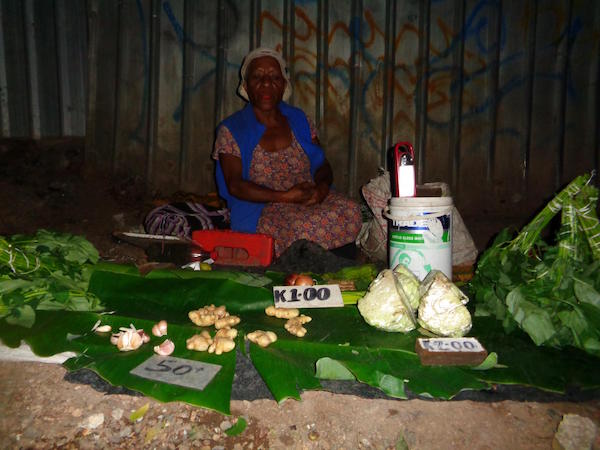
By Cathy Tukne
On the eve of the national State of Emergency (SOE) shut down, little did informal vendors know how this sudden decision would snap their daily livelihoods. While the SOE was a crucial measure to prevent the spread of the COVID-19 virus, the restrictions imposed had a devastating impact on the majority of urban people whose livelihoods are strongly linked to informal economic activities.
“Suddenly everything comes to a close, like as if our lives were put to stop by a greater agenda” says one vendor.
No one has questioned how low income families are faring and what has been the impact of the shut down on their earnings and income, their health, and on women and children in general.
The government certainly was caught unaware and severely underestimated the impact of the lockdown on the urban poor; and its belated attempts to be seen to be providing food was uncoordinated, patchy and did not compensate for the loss of daily earnings.
Morata is one of the largest squatter settlements, recently turned suburb, in Port Moresby, the capital city of Papua New Guinea. It is densely populated, and home to thousands of people whose main income is generated through informal economical activities. It is one of many shanty towns and settlements throughout the country.
A case study was done to understand the impact of COVID-19 SOE on urban poor to understand the impact of the crisis. The results are presented as follows.
A sample size of 15 households were randomly selected. The normal income ranges for each household before the SOE was K500- K3,000 per fortnight, depending on the type of informal economic activity.
Table 1. Average earnings among informal urban households.

In each case the household income sustained a family of between 10 and 20 people, putting food on the table and paying for another essential items.
The impact of the SOE restrictions was immediate and severe; with the poorest families faring the worst. Within two weeks, incomes had dropped by as much as 75% for the high income earners and over 90% for the poorest families.
Graph 1. Income difference before and after SOE

On a typical evening, with an average of over 15 mouths to feed per household, the middle to high income earners were able to survive the first few weeks. Sadly, the low income earner immediately went without food. As displayed in Figure 2, the profits made during SOE period could not sustain their living.
Households described many challenges but the primary problems were;
- Access to food and other supplies;
Ensuring food and other essential supplies, reached the vulnerable sections of the city was a challenge during the SOE. 80% of the respondents reported not getting access to adequate supplies of food, essential items and other services
- Public Transport suspension.
90% of respondents said they could not restock on supplies to sell as movement was restricted. It was therefore impossible for them to make sales. All of them experienced a huge loss in revenue.
- Public gathering prohibited
60% of the respondent were not aware of the social distancing protocols. They claimed to have been chased and harassed by police.
- Markets price increase.
The findings revealed that 90% of the food consumed by the participating households was from fresh food markets. As supply of fresh produce came to an abrupt halt, the demand and price of these items increased. All the respondent said they paid no attention to nutritional value, and ate what was affordable and available.
- Restricted, or no access to health and education services
Lack of basic awareness on COVID-19 amongst health workers resulted in unnecessary closure of public health clinics. This resulted in limited access to affordable health services for many families in the city. 30 % of the respondents said they were ill during the lockdown and suffered terribly as they did not have access to a health worker.
- Hunger and starvation; 95% of the households interviewed confirmed that they skipped meals in the first week of the SOE and experienced hunger and starvation in the second week. 5% of the respondents confirmed going to churches to get something to eat through the government supported feeding program.
This pandemic has amplified and further widened the gap between the rich and the poor. The experiences of the last 3 months will most likely shape those affected, and impact our overall efforts at recovery. This survey shows that a lot needs to change in terms of policy and incentives to protect the most vulnerable members of the community, such as the women and children. Without incentives and social security, it is crucial to proceed with caution when planning and executing State of Emergencies in a crisis.

The recommendations
In future the Government must maintain access to the flow of fresh food from rural and peri-urban producers into urban markets, through the informal sector. The city authorities need to ensure safe markets and provide alternative income streams for women and their families.
Proper fear and stigma-eradicating awareness is also needed, utilizing existing community networks in city settlements. COVID-19 remains a threat globally and in PNG but nature and geography has helped us buy time. We need to use this time, with adequate resources, to conduct mass education for the bulk of the population on prevention of COVID-19 spread when conducting their business activities and when with family. Existing community groups are vital awareness conduits, as it creates ownership of the issue, retain knowledge within these community groups and will prove sustainable in the long term.
COVID-19 has made us realize that agriculture is the most important sector of our economy and can sustain us all in times of emergency and when the widely promoted formal sector comes to a halt. But, in urban centres, government must be proactive to ensure supply is not disrupted by the restrictions on movement otherwise it risks swapping one health crisis for another.
